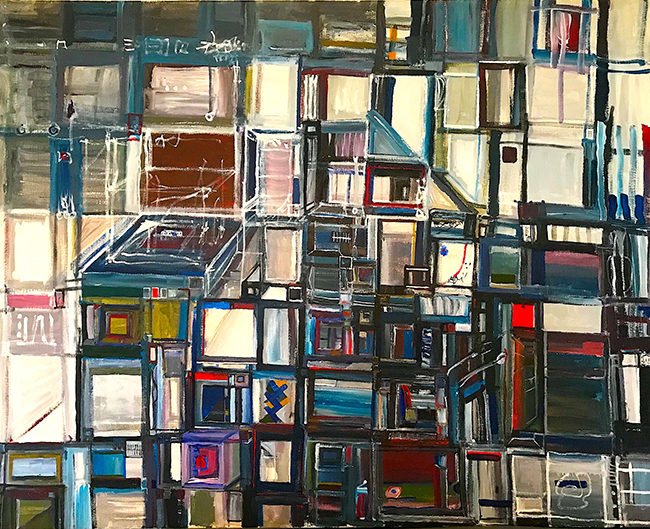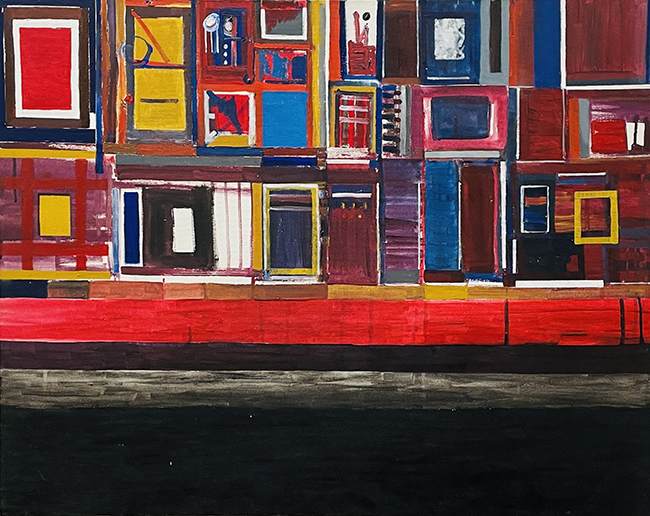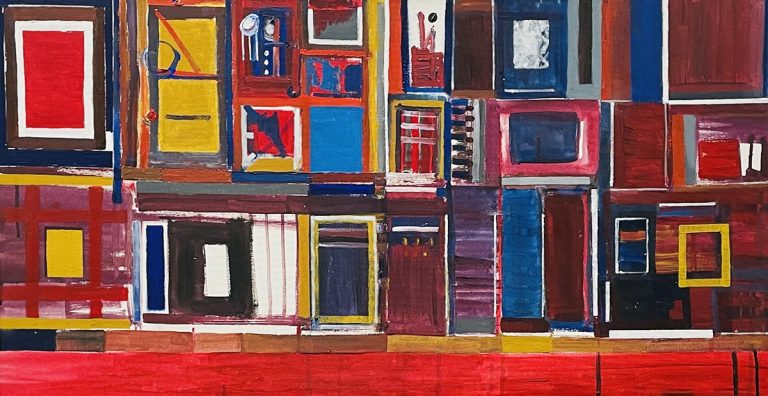Graham Duncan Elder is a British artist whose paintings transform personal memories, cultural encounters, and raw emotion into vivid expressions brimming with life. Growing up in the dynamic whirlwind of 1980s and 90s London, Elder was surrounded by contrasts—ancient Egyptian art juxtaposed with neon graffiti, pulsating electro rhythms mingling with the sounds of the Underground. These eclectic experiences became the foundation for his artistic vision, blending diverse influences into a cohesive yet multifaceted style.
Elder’s artwork weaves together elements as varied as hieroglyphic imagery, the fluid improvisation of jazz, and the kaleidoscopic aesthetics of psychedelia. Each painting offers a glimpse into his inner world, stitching fragments of dreams and memories into complex, layered compositions. Rather than presenting literal narratives, Elder’s canvases rely on symbolism, texture, and color to spark emotional and intellectual connections. His work opens a doorway to a realm where imagination thrives and traditional boundaries fade away.
Peering Into the Unconscious: Elder’s Artistic Process and Themes

Elder’s painting Boxed Unconscious serves as a testament to his fascination with the intersection of memory, dreams, and physical space. Created twenty years ago, the painting takes its inspiration from the London Underground—not just the iconic transit system but the network of hidden passages and crypts beneath the city. This layered, subterranean world serves as a metaphor for the depths of the unconscious, a recurring theme in his work.
The composition is built from stacks of boxes, each one holding a fragment of a dream. Elder approached this project in a state of near-sleep, painting directly after naps to capture the ephemeral, hazy quality of dream memories. The result is a topsy-turvy construction that feels both grounded and surreal. Tonal shifts in the piece mirror the contrast between the darker moods of night and the clarity of daylight, creating a visual rhythm that resonates with the ebb and flow of the dream state.
Boxed Unconscious is a reflection of Elder’s early explorations into abstract architecture. The painting bridges the tangible and the imagined, blending the structural solidity of the Underground with the fluidity of subconscious thought. This balance between opposing forces—control and spontaneity, reality and fantasy—is a hallmark of his artistic style.
Returning to a Theme: The Evolution of Elder’s Work

Fast forward to today, and Elder revisits these ideas in a new painting, City Street Stack. While the thematic core remains—abstract architecture and stacked constructions—this piece reflects a fresh perspective developed over two decades. The gap between the two works allowed Elder to refine his approach and experiment with new palettes.
In City Street Stack, he swaps the muted tones of Boxed Unconscious for golds, bright reds, deep blues, and lamp blacks. The colors pulse with energy, creating a sense of vibrancy that contrasts with the earlier piece’s subdued mood. The composition is still improvised, with layers of shapes fitting together like pieces of a puzzle, but the overall effect feels bolder, more deliberate.
This painting is part of Elder’s ongoing Constructions series, a project that spans from 2004 to 2024. It’s a testament to his commitment to exploring imaginary architectures and spaces. The series reflects his ability to take a single theme and evolve it over time, adapting to new ideas while maintaining a cohesive thread.
Imaginary Spaces, Real Emotions
Elder’s paintings are more than just abstract compositions—they’re emotional landscapes. Through his use of color, shape, and texture, he captures the complexity of memory and the fluidity of dreams. Each piece is a snapshot of his subconscious, yet it resonates with viewers on a universal level.
Both Boxed Unconscious and City Street Stack invite us to consider the spaces we inhabit, both physically and mentally. They remind us of the hidden layers in our own lives—the memories we carry, the dreams we chase, and the emotions we feel but cannot always articulate.
Elder’s work is a journey into these spaces, offering not answers but an opportunity for reflection. His ability to blend the personal and the universal makes his paintings more than just art—they’re experiences. Whether exploring the crypts of London or the architecture of imagination, Elder’s work leaves a lasting impression, one that continues to unfold long after the canvas is complete.

